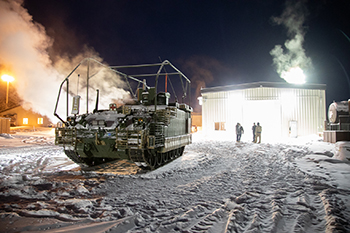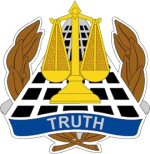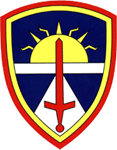- Homepage >
- Organization >
- History
History
In 1998, the Vice Chief of Staff of the Army approved the consolidation of developmental and operational testing. Central to the consolidation was ATEC assuming overall responsibility for all Army developmental and operational testing. The original U.S. Army Test and Evaluation Command (TECOM) became a major subordinate command of ATEC and was redesignated as the U.S. Army Developmental Test Command (DTC). In addition, the U.S. Army Test and Experimentation Command (TEXCOM) was redesignated the U.S. Army Operational Test Command (OTC). The third ATEC subordinate organization that was redesignated encompassed both the U.S. Army Operational Evaluation Command and the U.S. Army Evaluation Analysis Center, which were combined to form the U.S. Army Evaluation Center (AEC), completing the earlier decision to move developmental and operational evaluation into a single, integrated command.

Our mission has been constant – to provide test and evaluation (T&E) services for most everything in a Soldier environment, whether in training, exercises, or combat. ATEC supplies resulting T&E information to senior leaders regarding materiel effectiveness, suitability, and survivability. Senior leaders decide on the Army’s return on investment: specifically, does the materiel benefit our Soldiers and support specific defense strategies and plans – all in a way that is fiscally responsible.
ATEC’s 8,000+ military, civilian, and contractor personnel are highly skilled test officers, engineers, scientists, technicians, researchers, and evaluators who are involved in over 2,300 tests annually. These tests ensure that Army senior leaders have the essential information required before weapons and equipment are placed into the hands of our service members. When working at ATEC, employees become involved with people of many disciplines and receive “hands-on” experience with the most sophisticated and advanced technology in the world.
Recent highlights of ATEC test programs include aviation (UH-60V Black Hawk and Future Vertical Lift); wheeled vehicles (Stryker); communications, imagery, and air defense systems (Maneuver Short Range Air Defense (M-SHORAD)); and munitions and ammunition (Joint All Domain Command and Control (JADC2)). In addition, ATEC is a leader in Project Convergence exercises that identify and refine recommendations necessary to transform the Army and ensure future war-winning readiness.
As a major stakeholder in the Army’s acquisition process, ATEC tests and evaluates manned and unmanned systems, vehicles, missiles, rockets, air systems, communications systems, body armor, and chemical/biological systems. We test for system effectiveness, suitability, and survivability. We work to make sure it works!
ATEC reports to Army senior leaders about the Army’s most significant and important programs to include the following:
In the area of aviation, ATEC has tested and evaluated the UH-60V Blackhawk, CH-47F, Company S-UAS, Future Vertical Lift (FVL), and Future Tactical UAS (FTUAS), Wheeled vehicles include Stryker, Family of Medium Tactical Vehicles (FMTV) A2 variants; joint light Tactical Vehicles (JLTV), and Mine Resistant Ambush Protected (MRAP) family of vehicles to support all types of military operations.
Communications, imagery, and air defense systems include – IM-SHORAD, M-SHORAD, Navigation Warfare Electronic Attack (NAVWAR EA), and Tactical Space Layer Directed Requirement.
In the areas of munitions and ammunition – Spike Non-Line of Sight (NLOS) Anti-tank Guided Missile (ATGM), XM913 50 x 228mm Cannon, Joint All Domain Command and Control (JADC2), 30mm x 173 XM1170 APFSDS-T (series of ammunition includes armor-piercing, anti-personnel, airburst and low-cost training ammunition).
Other major test events include Enhanced Night Vision Goggle-Binocular (ENVG-B); Leader Radio (LR) and Manpack (MP) Production Qualification testing; Integrated Tactical Network (ITN); Mounted Assured Position Navigation and Timing System (MAPS) Operational Technical Demonstration and the Dismounted APNT System (DAPS) open air test; Mobile Protected Firepower; Armored Multi-Purpose Vehicle (AMPV); and Extended Range Cannon Artillery (ERCA).
ATEC is also a major player in Project Convergence/CAPSTONE events - partnering with Army and other Service components in exercises that identify and refine recommendations necessary to transform the Army and ensure future war-winning readiness.
ATEC methodologies and capabilities are cutting edge and trend setting, often sought-after by other Services, foreign military services, and private industry. Examples include the following:
Multi-domain Operations (MDO) Distributed Live Virtual Constructed (LVC) Initial Operating Capability: ATEC continues to develop and employ a modular, high-fidelity distributed T&E environment to enable system of systems interoperability and MDO T&E at tactical scale in support of Army modernization.
Artificial Intelligence/Machine Learning (AI/ML) Evaluation: ATEC is establishing innovative, effective, and adaptive ATEC T&E and business processes focused on AI/ML evaluation to enable Army modernization and reduce T&E cost and schedule.
Synthetic Training Environments (STEs) – ATEC uses advances in virtual reality, augmented reality, and gaming technologies to develop virtual trainers. ATEC leads and supports multiple tests in this area. As an example - ATEC led a test where Soldiers executed a Company-level training event utilizing Reconfigurable Virtual Collective Trainer (RVCT) Ground (Abrams, Bradley, Stryker, dismount) and RVCT Air (Apache, Blackhawk, Chinook, UAS) platforms.
In addition, ATEC T&E and business support areas are continually being modernized:
- Support Army Modernization priorities (Army of 2030/2040).
- Define a future holistic state that supports T&E in an MDO environment.
- Develop a plan comprising quantifiable, measurable, time-phased tasks to transform the Enterprise from the current state to future state.
As a direct reporting unit (DRU) under the Vice Chief of Staff the Army, ATEC is dedicated to informing Army senior leaders and enabling the Army’s continuous transformation which will serve the Army and our Nation well into the future.


